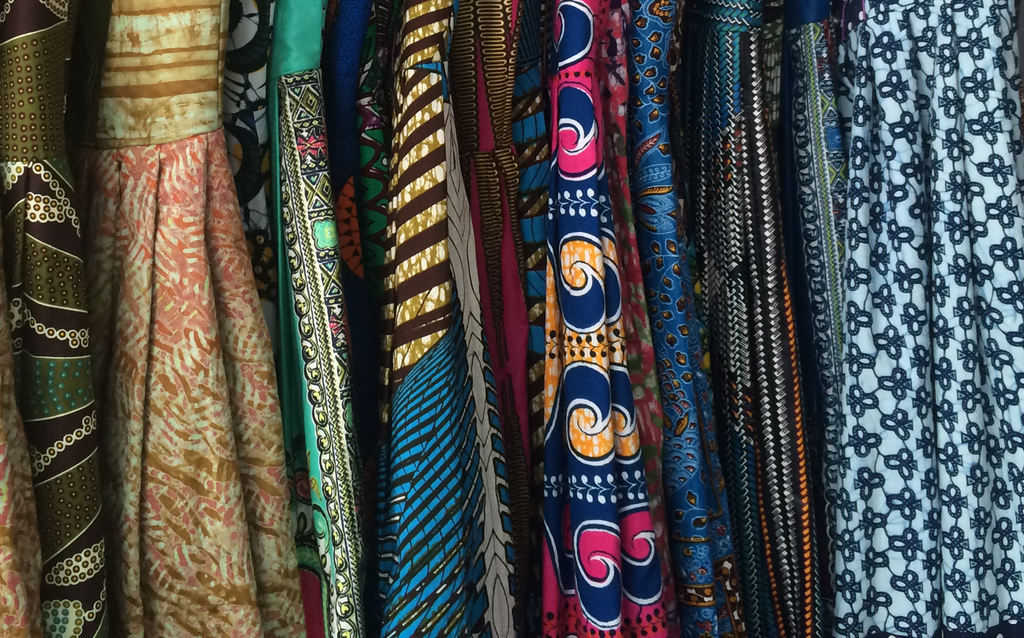Wax fabrics – an exciting and colorful piece of the puzzle in Africa’s identity
rahmée wetterichShare
Hardly anything is as closely associated with Africa as the colorful, large-scale patterned fabrics that are also a typical part of the NOH NEE dirndl . What hardly anyone knows, however, is that these so-called wax prints were not originally traditionally African, but only came to the continent's markets indirectly.

Dutch Wax: From Indonesia via Holland to the coast of West Africa
The beginnings of the spread of these distinctive textiles lie in the – generally not very glorious – colonial period. And not in Africa, but in Asia. A Dutch company had tried its luck by mechanizing the production of Indonesian batik fabrics. However, with little success locally. Because the Indonesians still preferred their own local and handmade products.
As a result, freighters sometimes offered the Dutch goods at African ports during stopovers on the way to Indonesia. Here, the new offer met with more interest. From the then "Gold Coast", now Ghana, enthusiasm for the striking wax fabrics quickly spread to many other African countries.
Confident fusion of cultures
Wax prints continue to shape the multifaceted African fashion to this day. What's more, as a symbol of African culture, they also shape international fashion trends. Luxury brands often send their models down the catwalk in dresses made from the fabrics. World stars such as Beyoncé and Rihanna have outfits made from them.
What was originally a colonial product has actually become a piece of African identity. Whether in Ghana, Senegal or Cameroon, women in different countries have combined the fabrics and patterns with their own cultures and clothing styles and created new styles for themselves.
Ghanaian fabrics for NOH NEE collection
Even though a significant proportion of wax fabric production is still in the hands of Dutch companies, there are now also leading African suppliers. For example, the NOH NEE Benin collection, which is made entirely in Africa, only uses wax prints from the GTP company in Ghana. In this way, we want to contribute to a seamless, fair and transparent local production chain.
The fabrics should not be confused with the similarly named, washable oilcloth. The name of wax prints or wax fabrics comes from the printing technique used: the patterns are applied to cotton fabric with wax and then dyed on both sides. The even and long-lasting color intensity on the front and back of the fabric is an important quality feature of high-quality textiles made in Africa and the Netherlands.